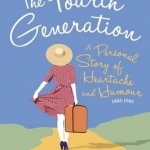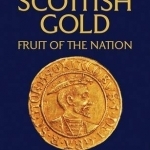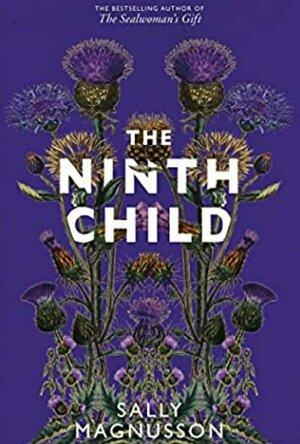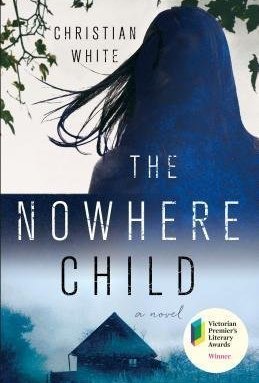Brumpolarbears (22 KP) rated The Old Hellfire Club in Tabletop Games
Jun 18, 2019
In The Old Hellfire Club two to six players take on the roles of the destitute final members of an ancient aristocratic secret society as they recount the tales of their greatest adventures to the patrons of the shadiest public houses of Old London Town. Drawing on the cards in their hands for inspiration, players weave an ever more elaborate (although far from honest) tale of daring and adventure in the hope that the drinking den’s patrons will offer them a penny for their woes. As competition for the pennies on offer increases, so too do the exaggerations and outright lies players tell about their role in the story in the hope of making themselves seem more deserving. At any time, a player can challenge anothers versions of the story by playing a less impressive card from their own hand, thereby revealing the exaggeration and taking the rewards for the story. When the tale reaches its climax, whoever has been given the most pennies wins the game.
You can win pennies by getting away with telling extravagant lies about the adventures you had (by playing
high value Boast Cards without being successfully challenged by other players), through the charity of
strangers (by meeting the conditions set out on certain Patron Cards), and by satisfying the predilections of
the mysterious benefactors lurking in the audience (by successfully playing the most cards from a particular
suit over the course of the game).
While there’s still some time until you can physically purchase The Old Hellfire Club, which launches on Kickstarter on 9 April 2019, the developers have launched a free….yes free….print and play version of the game, meaning you can print your own copies of the cards and play with friends.
You can download a copy of the file by visiting The Old Hellfire Club’s profile on Boardgame Geek. I cannot rate this game highly enough. While I was sceptical at first because, in all honesty, I’m not that great at creating stories on the spot, especially those set in Victorian England, The Old Hellfire Club was incredibly quick to pick up. During the preview at UK Games Expo there were quite a few laughs, particularly when I joined Karl Marx for a gin or two. Who knows where future tales may lead.
ClareR (6037 KP) rated The Ninth Child in Books
May 1, 2020
We also get little glimpses in to the private lives of Queen Victoria and Albert, and the reason for this becomes clear as the story progresses. The link between the two families seems to be a strange character called Robert Kirke. Strange things seem to have been happening since the digging and tunnelling began. Isabel meets this strange man not long after she moves near to the site of the Loch Katrine Waterworks. This is no place for a lady brought up in all the comforts of a well-to-do Glaswegian home. But Isabel finds solace in the wildness, and the descriptions of the lochs and landscapes makes it easy to understand why.
This was such a surprising book, it wasn’t at all what I was expecting. I WAS expecting a good story - I loved The Sealwoman’s Gift. The mix of real, hard life and the fairy elements were really well done, and I loved that these weren’t the pretty, twee, friendly fairies that we seem to hear of so much of these days. I like my fairies to be tricksters, untrustworthy, always looking for an angle that they can work, a little grotesque.
I really enjoyed this book, and seemed to read it far too quickly. I’m a lover of history, myths and the unexplained, and this certainly delivered in these areas. The writing is gorgeous - the descriptions are such that you feel you’re there. We were supposed to be going on holiday this year to the Highlands, and this has made me hope even more that we’ll still be able to go. It’s one thing reading a description, it’s quite another to be there, experiencing the landscape for yourself.
This is a wonderful book, and one to tell my friends about!
Many thanks to NetGalley and Two Roads for my copy of this book to read and review.

The Fourth Generation: A Personal Story of Humour and Heartache 1885-1985
Book
There are no exceptions and therefore there are no choices. This book is about the choices people...

Holkham: The Social, Architectural and Landscape History of a Great English Country House
Book
Holkham Hall is a masterpiece of eighteenth-century Palladian architecture set in a large walled...

Scottish Gold
Neil D. L. Clark, Alison Sheridan and Donal Bateson
Book
Gold has been an important part of Scottish heritage for millennia and a new mine will shortly open...

Sportsbet - Online Betting
Sports and Entertainment
App
Join now and we’ll match your first bet up to $100 in Bonus Bets (T&Cs apply. Excludes residents...
graveyardgremlin (7194 KP) rated India Black (Madam of Espionage, #1) in Books
Feb 15, 2019
<b>India Black</b> is a well-written and entertaining read, featuring a no-nonsense, street-wise, and book-smart whore-turned-madam who is the namesake of the book. While I do like India and her voice, there was something about her that felt off, and after thinking about it I've come to realize that I really don't know her that well. I find that odd because the book is told first-person. Even though this is the first in the series and some authors may not want to divulge everything about a character, I think there needed to be more tidbits about India. What's her history? How did she grow up? Was she groomed to be a whore? Etc., etc., etc. Besides, French is the secretive one, we don't need two mysterious characters in one book. As for the attraction between India and French promised on the back of the book, well, it wasn't there. Now there's the promise for that in the future, but there weren't enough scenes with the two of them together for anything to actually happen except some minor discussions about the issue(s) at hand, some bantering, and a decent amount of bickering -- though luckily not too much of the latter to annoy.
The plot is fine, but there's really nothing new to distinguish it from others in Victorian mysteries. Actually, the book doesn't feature any mystery what-so-ever and it's more of a chase to retrieve top secret government documents; I've heard the term caper thrown around and that sounds about right for this book. After a while I felt like I was in <b>Groundhog Day</b> -- same scenarios popped up under different circumstances, but all with the same outcome, which became tiring. The historical facts would have been better served had they been more smoothly incorporated into the story rather than dropped in big chunky lumps that often bored me (and I <i>like</i> history). The atmosphere of the book was fairly well-done, though it seemed a bit too polished and clean, so a little more grit would have given it some needed realism. The main character is a madam who can't possibly live in best neighborhood, and no matter how well-mannered, groomed, or intelligent she may be, she has to live in a tough place.
While I do have those minor issues about the book, the question is, <i>"Would I read the next book in the series?"</i> Yes, I believe so, because overall, I did enjoy this foray into India Black's world and it has the makings of a very interesting series.
Midge (525 KP) rated The Nowhere Child in Books
Mar 11, 2019
The book opens with an introduction to the main protagonist Kimberly (Kim) Leamy who is a photography teacher in Melbourne, Australia. Twenty-six years earlier, Sammy Went, a two-year-old girl vanished from her home in Manson, Kentucky. James Finn, an American accountant who contacts Kim is convinced she was that child, kidnapped just after her birthday. She cannot believe the woman who raised her crossed international lines to steal a toddler.
Jack and Molly Went’s daughter Sammy disappeared from their Kentucky home in 1990. Already estranged, the couple drifted further apart as time passed. Jack did his best to raise and protect his other daughter and son while Molly found solace in her faith. The Church of the Light Within, a Pentecostal fundamentalist group who handle poisonous snakes as part of their worship, provided that faith.
Now, with proof that she and Sammy are in fact the same person, Kim travels to America to reunite with a family she never knew she had and to solve the mystery of her abduction that will take her deep into the dark heart of religious fanaticism.
For me, Christian White’s writing is captivating and extremely well structured. Although the theme of a child being stolen is not particularly original, the clever telling of this story made it a joy to read. The chapters alternate between the past and the present, maintaining the reader’s attention. The chapters narrated in the past explore the impact of Sammy’s disappearance on her family and the community in which they live. The other chapters follow Kim’s pathway of discovery to the truth about her past.
The most gripping parts of “The Nowhere Child” were the chapters about the past, as the author unearthed long-buried secrets of Kim’s grieving family. It seemed that nearly every character from her past had something they wanted to be kept hidden. Revelations were made that included identity, betrayal, secrets, loss and a sinister cult. A tense story of menace and suspense, the story held my interest from start to finish and the way in which Christian White brought everything to a conclusion was just fabulous.
I loved “The Nowhere Child” and I would recommend it to anyone who likes this genre. It has left me eager to read more from this author in the future.
Thank you to #NetGalley, and HarperCollins UK for a free ARC of #NowhereChild in exchange for a voluntary, honest review.
Hazel (1853 KP) rated You Were Here in Books
Dec 7, 2018
On the five-year anniversary of Jaycee Strangelove’s brother’s death, she goes to visit one of his favourite haunts – an abandoned Victorian mansion that used to be an insane asylum. However, this year she is joined by four other people who, although they do not show it, feel as broken as Jaycee does.
<i>You Were Here</i> by Cori McCarthy is primarily about Jaycee’s dangerous attempts to feel closer to her daredevil brother. Using his old diary as a guide, she is determined to find evidence that her brother had been at the various decrepit places that he wrote about breaking in to. Her behaviour seriously worries others, which is why Jaycee ends up with four unlikely characters tagging along: Natalie, her ex-best friend; Zach, Natalie’s immature boyfriend; Bishop, a guy suffering after a break up; and the selectively mute Mikivikious, her brother’s childhood friend.
Each character is struggling with their own problems, yet they take the time to make Jaycee realize that her brother is gone and she needs to move on. However there is a lot of fighting and sabotage of relationships along the way.
Each character progressively tells the story by alternating chapters. Whilst this is fairly common in fiction – both young adult and adult – McCarthy’s method stands out amongst the others. Bishop likes to express his feelings through art and therefore does not have any written chapters to his name. Instead a few photographs of his artwork are included. Similarly, Mikivikious, a character who barely talks, shows his point of view through a short graphic novel sequence (drawn by the illustrator Sonia Liao). It is really interesting to read(?) parts of the story this way, and it also makes the reader connect to Mik’s struggle to express himself verbally.
It is difficult to like any of the characters to begin with – mostly because their flaws are revealed but their history is yet to be disclosed. Jaycee, the main character, is particularly hard to like. She is depressed and lonely with a serious self-destructive streak. This causes her to be rude, hurtful and sarcastic to everyone around her. It is actually surprising that anyone cares about her at all.
Due to not connecting with any of the characters, I was not all that impressed with this book. I understand the point of portraying certain people, especially Jaycee, in such a negative way, however it made me not really care about the outcome. Future readers need to be aware that the storyline can be very dark and morbid at times. There are also sexual references and foul language.




